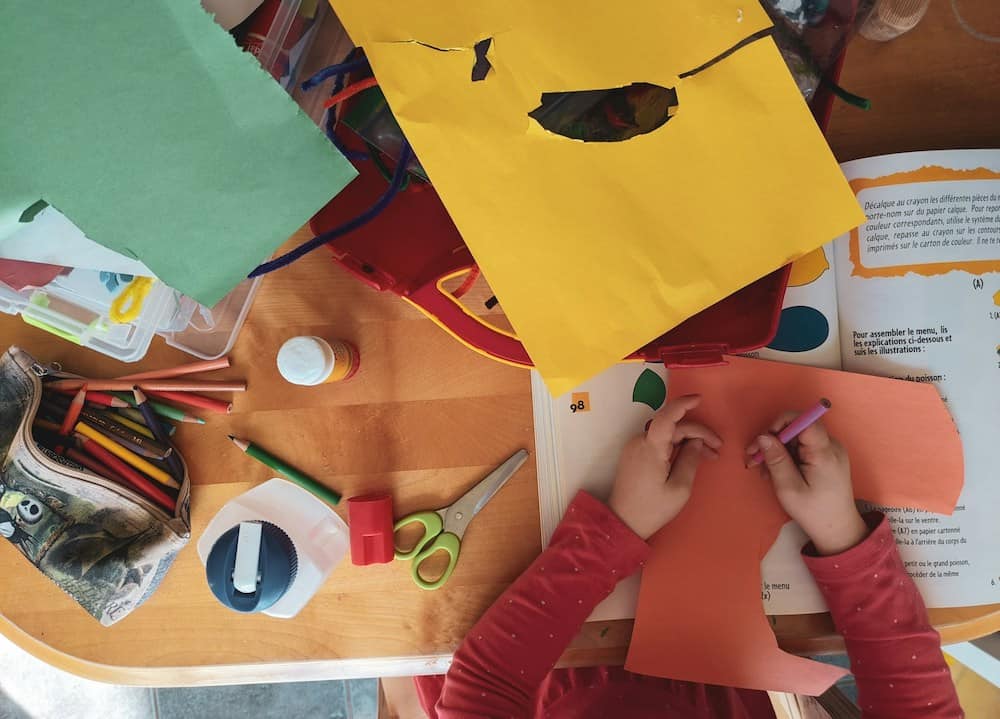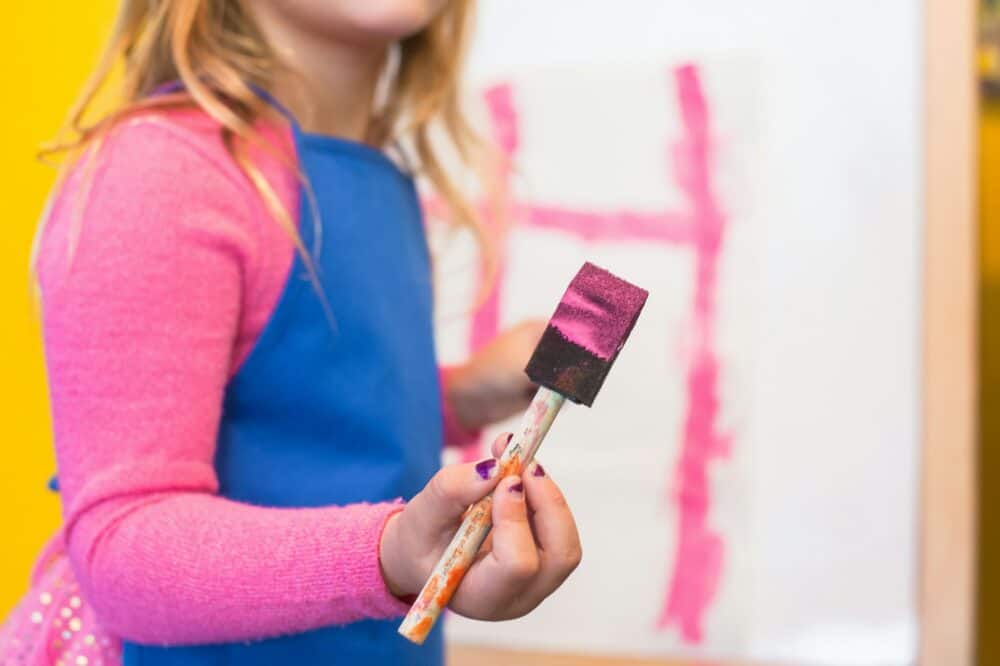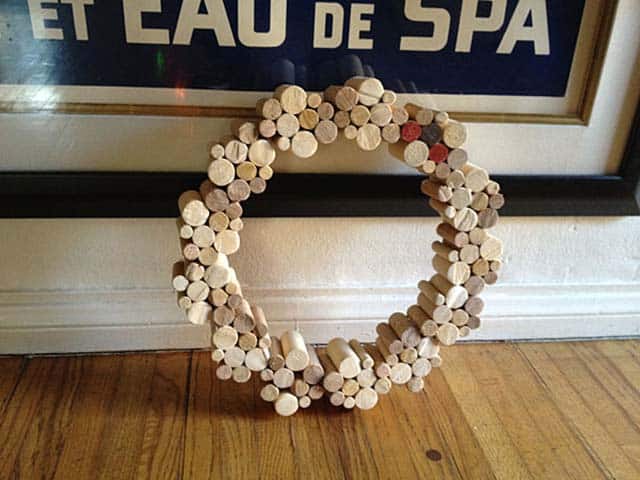Art is an incredibly important aspect of a child’s development. It allows them to explore their creativity, express their emotions, and develop important skills that will benefit them throughout their lives. Having a dedicated art space at home can provide children with the freedom to experiment, create, and grow.

In this article, we will discuss the importance of art for children, how to plan and design a kid-friendly art studio, and how to maintain and update it as your child grows.
Understanding the Importance of Art for Children
Art plays a crucial role in a child’s development. It helps them develop fine motor skills, hand-eye coordination, and cognitive abilities. Through art, children learn to solve problems, make decisions, and think critically. It also allows them to express their thoughts, feelings, and experiences in a visual form.
Furthermore, engaging in art activities can enhance a child’s sensory awareness and perception. By working with different textures, colors, and materials, children can improve their sensory processing skills and develop a deeper understanding of the world around them. This sensory exploration can also stimulate their brain development and enhance their overall cognitive function.
The Role of Art in Child Development
Art promotes creativity and imagination, allowing children to think outside the box and explore new ideas. It helps them develop their own unique identity and build self-confidence. Art also encourages perseverance, patience, and the ability to learn from mistakes. It fosters a sense of pride and accomplishment when children see their ideas come to life.
Moreover, art can serve as a form of therapy for children, providing them with a means to process and cope with challenging emotions and experiences. Creating art can be a cathartic and empowering experience, allowing children to express complex feelings in a tangible and constructive way. This emotional outlet can promote mental well-being and resilience in children, helping them navigate the ups and downs of childhood.
Encouraging Creativity and Expression
Art allows children to express themselves in a non-verbal way, which can be especially beneficial for those who find it difficult to communicate their thoughts and feelings verbally. It provides them with a safe and expressive outlet for emotions and helps them develop emotional intelligence. Art also encourages problem-solving and encourages children to think creatively to find unique solutions.
Additionally, engaging in art can foster a sense of cultural appreciation and understanding in children. By exploring different art forms, styles, and traditions from around the world, children can develop a broader perspective and learn to appreciate diverse cultural expressions. This exposure to various artistic influences can spark curiosity and a lifelong interest in the arts, enriching their cultural awareness and empathy towards others.
Planning Your Home Art Studio
Creating a dedicated art space at home requires some planning and consideration. Here are some factors to keep in mind.
When planning your home art studio, it’s important to consider not only the physical space but also the atmosphere you want to create. Think about incorporating inspiring artwork on the walls, comfortable seating for your child, and perhaps a small table for them to work on. These elements can help stimulate creativity and make the space more inviting.
Choosing the Right Space
Select a well-lit area in your home where your child can comfortably work on their art projects. Consider natural light sources, as they provide the best lighting conditions. Choose a space that allows for easy access to art supplies and materials while still being organized and clutter-free.
Additionally, think about the layout of the space. Would your child benefit from having a designated area for painting, another for drawing, and perhaps a cozy reading nook for inspiration? By dividing the space into different zones, you can create a more versatile and functional art studio.
Budgeting for Your Art Studio
Creating a kid-friendly art studio doesn’t have to break the bank. Set a budget for art supplies and materials, and prioritize essential items. Look for sales, discounts, and second-hand options to save money. Remember, the focus should be on providing a creative space for your child rather than expensive materials.
Consider DIY projects as well to add personal touches to the art studio. You could create custom storage solutions using recycled materials or decorate the space with your child’s own artwork. Involving your child in the process of setting up the art studio can also make it a fun and memorable experience for both of you.

Essential Art Supplies for Kids
When it comes to art supplies for children, safety should be the top priority. Opt for non-toxic and child-friendly materials. Here are some essential supplies to consider for your home art studio.
Art is not only a fun activity for kids but also a great way to foster creativity and imagination. By providing a safe and inspiring environment, children can freely express themselves through art, developing their fine motor skills and boosting their confidence.
Safe and Non-Toxic Materials
Choose art supplies that are labeled as non-toxic and safe for children. This includes paints, markers, crayons, and glue. These materials ensure that your child can explore and create without any harm.
Non-toxic art supplies are not only safe for children but also for the environment. By choosing eco-friendly options, you are teaching your child the importance of sustainability and caring for the planet from a young age.
Exploring Different Art Mediums
Introduce your child to various art mediums such as watercolors, acrylics, colored pencils, and clay. Give them the opportunity to experiment and find which medium they enjoy working with the most.
Each art medium offers a unique sensory experience for children. Watercolors provide a fluid and transparent effect, while acrylics offer vibrant and quick-drying colors. By exploring different mediums, children can discover new techniques and styles, expanding their artistic horizons.
Designing a Kid-Friendly Art Studio
Designing a kid-friendly art studio involves creating an organized and inspiring environment that encourages creativity. Here are some tips to consider.
Organizing Art Supplies
Invest in storage solutions that are easily accessible to your child. Label containers or drawers to keep art supplies organized and ensure that they are easily identifiable. This will help your child develop a sense of responsibility and independence when it comes to cleaning up after their art sessions.
An easel is a great way to view and work on your art pieces. Here’s a DIY easel project that any family can make.
Creating an Inspiring Environment
Decorate the art studio with your child’s artwork, inspirational quotes, and colorful posters. Display their creations on the walls as a way to encourage them and celebrate their achievements. Consider adding a comfortable seating area or bean bags where your child can relax and reflect on their creative process.
Maintaining Your Kid’s Art Studio
Once you have set up a kid-friendly art studio, it is important to maintain it so that it remains a vibrant and organized space for your child. Here are some tips to help you with this.
Cleaning and Storage Tips
Teach your child the importance of cleaning up after each art session. Encourage them to wash their brushes, organize their supplies, and wipe down their work surface. This not only keeps their art studio neat but also helps them develop good habits and responsibility.
Regularly Updating Art Supplies
As your child grows and develops new interests, it is important to update their art supplies. Introduce new materials, tools, and mediums to keep their creativity flowing. Consider involving them in the process of choosing new supplies so that they feel a sense of ownership and excitement in their art studio.
Creating a kid-friendly art studio at home allows your child to explore their creative potential and provides them with a safe and inspiring space for self-expression. By understanding the importance of art for children, planning and designing their art studio, and maintaining it over time, you can nurture their love for art and help them develop valuable skills that will benefit them throughout their lives.



